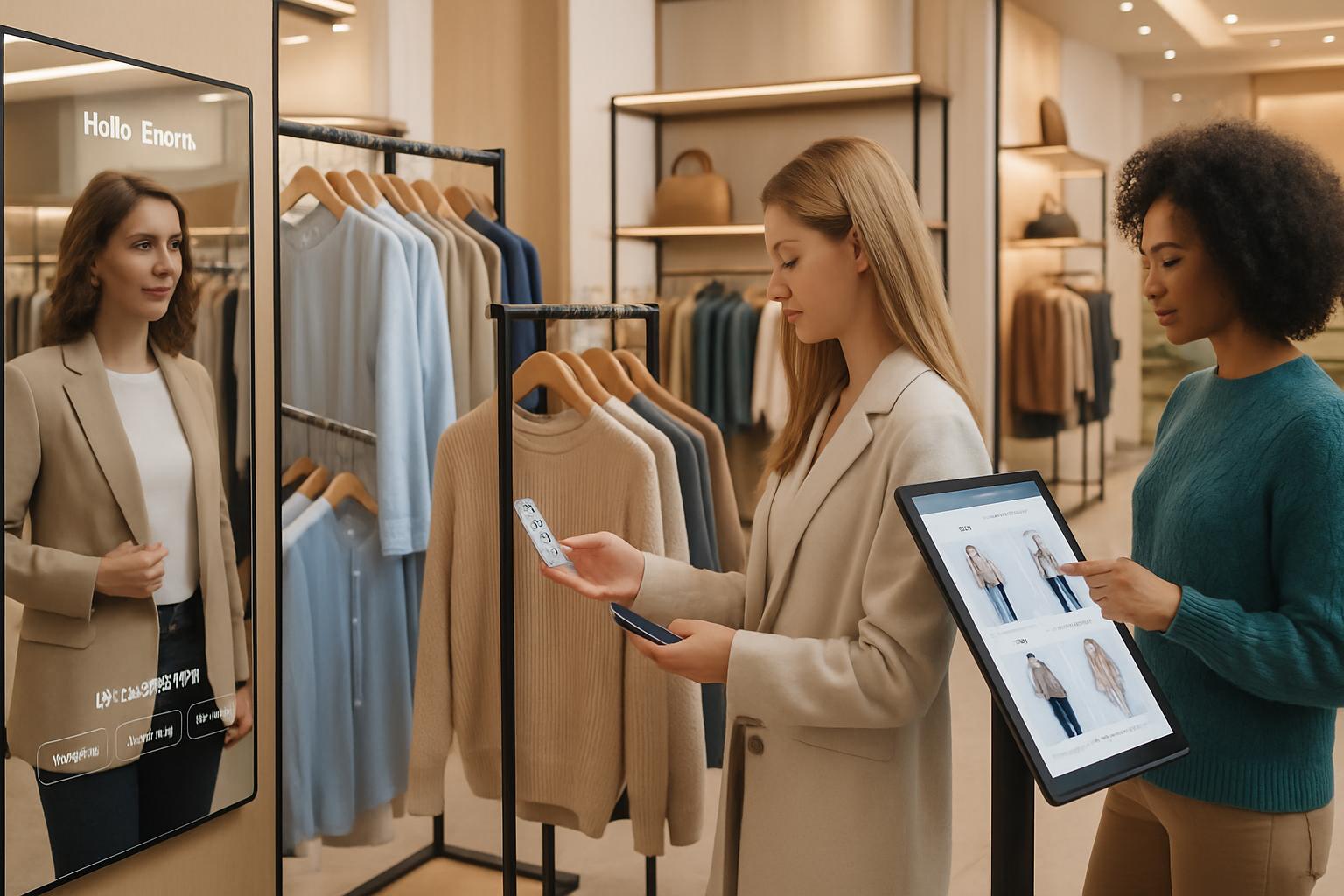
AI CERTS
9 hours ago
AI in Fashion Apps Accelerate Retail Transformation
This article unpacks the numbers, players, technologies, and risks behind the new styling paradigm. Moreover, it situates mobile growth claims within broader commercial realities. Professionals will gain actionable insights for strategy, partnerships, and certification pathways.
Market Momentum Trends Reveal
Global investment in digital wardrobe tools rose sharply during the past year. Furthermore, Style DNA amassed 3.2 million downloads and 70 k paid subscribers, TechCrunch reports. Phia secured 500k users within months, underscoring pent-up demand for conversational closets. AI in Fashion now dominates many venture pitches.

Despite no single confirmation of 300% app growth, aggregate indicators justify the buzz. In contrast, McKinsey estimates generative personalization could unlock 10-20% revenue lifts for retailers. Therefore, executives monitor usage spikes as leading KPIs for omnichannel innovation.
These data points demonstrate sustained traction, not isolated hype. Subsequently, understanding the drivers becomes essential.
Key Growth Drivers Shaping
Four forces accelerate adoption across storefronts and screens. First, smartphone penetration enables always-on closets. Second, cloud APIs cheapen computer-vision inference for instant outfit renders. Third, pandemic-era shifts pushed E-commerce share above 20% in many markets. Moreover, social platforms normalize selfie-based sizing, reducing friction. AI in Fashion benefits directly from each trend.
- 82% of shoppers welcome AI style support, McKinsey finds.
- 10-20% average order value gains reported after personalization rollouts.
- 66% of Gen-Z prefer chat-based product discovery, Fortune data shows.
- Up to 30% return reduction linked to virtual try-on pilots.
Consequently, venture capital flows toward firms integrating Recommendation Engines with visual search. These forces underpin the current acceleration. Nevertheless, retailers must execute carefully to capture value. Driver synergy fuels demand and platform stickiness. Meanwhile, brands craft strategic responses, explored next.
Retailers Respond Strategically Today
Incumbents like Stitch Fix blend human curators with generative suggestions for higher efficiency. Additionally, Mango integrates white-label Recommendation Engines across its app and flagship stores. In contrast, luxury houses pilot invite-only chat stylists to preserve exclusivity. AI in Fashion guides each roadmap.
Operational wins include faster merchandising decisions and reduced markdowns. Therefore, internal teams adopt agile experimentation playbooks drawn from software culture. Retailers also pursue talent upskilling through the AI+ Marketing™ certification for cross-functional fluency.
Strategic investments reveal confidence but also intensify competition. Consequently, risk management deserves equal attention.
Risks And Ethical Concerns
Privacy tops the list because selfie data remains sensitive biometric information. Moreover, improper storage can breach emerging digital-identity regulations. Bias also emerges when training sets ignore diverse body shapes. AI in Fashion therefore faces scrutiny.
Hallucinations pose commercial threats if models invent non-existent products during E-commerce sessions. Nevertheless, retrieval-augmented pipelines mitigate many inaccuracies. Sustainability activists further worry about accelerated consumption cycles.
These challenges highlight critical governance gaps. Subsequently, understanding core technologies informs safer deployments.
Technology Under The Hood
Computer vision maps garment features to embeddings enabling lightning-fast similarity searches. Additionally, large language models deliver conversational explanations in natural tone. Recommendation Engines then rank items using clickstream and preference vectors. AI in Fashion requires this orchestration.
Meanwhile, retrieval-augmented generation marries those systems, anchoring generative replies to live catalogs. Edge deployment further trims latency, crucial for mobile Personal Styling assistants. Consequently, the technology stack remains modular, easing retailer experimentation.
Robust infrastructure sets the performance baseline. Therefore, future value depends on roadmap alignment.
Future Outlook And Actions
Analysts expect AI in Fashion penetration to double within three years. Moreover, subscription Personal Styling models will expand beyond apparel into beauty and home decor. E-commerce margins could widen as Recommendation Engines personalize bundles more precisely.
However, strategic success requires investment in data governance and interdisciplinary teams. Organizations should benchmark pilots against clear retention, conversion, and return metrics. Professionals can deepen knowledge through the AI+ Marketing™ program and related specializations.
The coming quarters promise rapid testing and consolidation. Nevertheless, disciplined execution will separate leaders from followers.
Critical Takeaway Summary
AI in Fashion momentum looks irreversible. Personal Styling apps already influence purchasing paths. Recommendation Engines drive measurable lift while guarding margins. E-commerce ecosystems must balance innovation with ethics.
Leaders who invest in skills, infrastructure, and governance will capture lasting advantage. Consequently, certification pathways offer structured progression.
In conclusion, AI in Fashion continues rewriting retail playbooks at record speed. Furthermore, data-driven Personal Styling boosts shopper loyalty and lifetime value. Meanwhile, Recommendation Engines sharpen inventory decisions and marketing ROI. Nevertheless, privacy, bias, and sustainability risks require vigilant oversight. Therefore, forward-thinking professionals should pursue practical experiments and seek credentials like AI+ Marketing™ to stay ahead.



